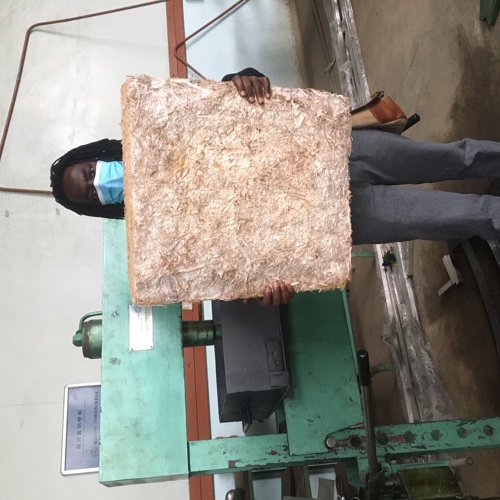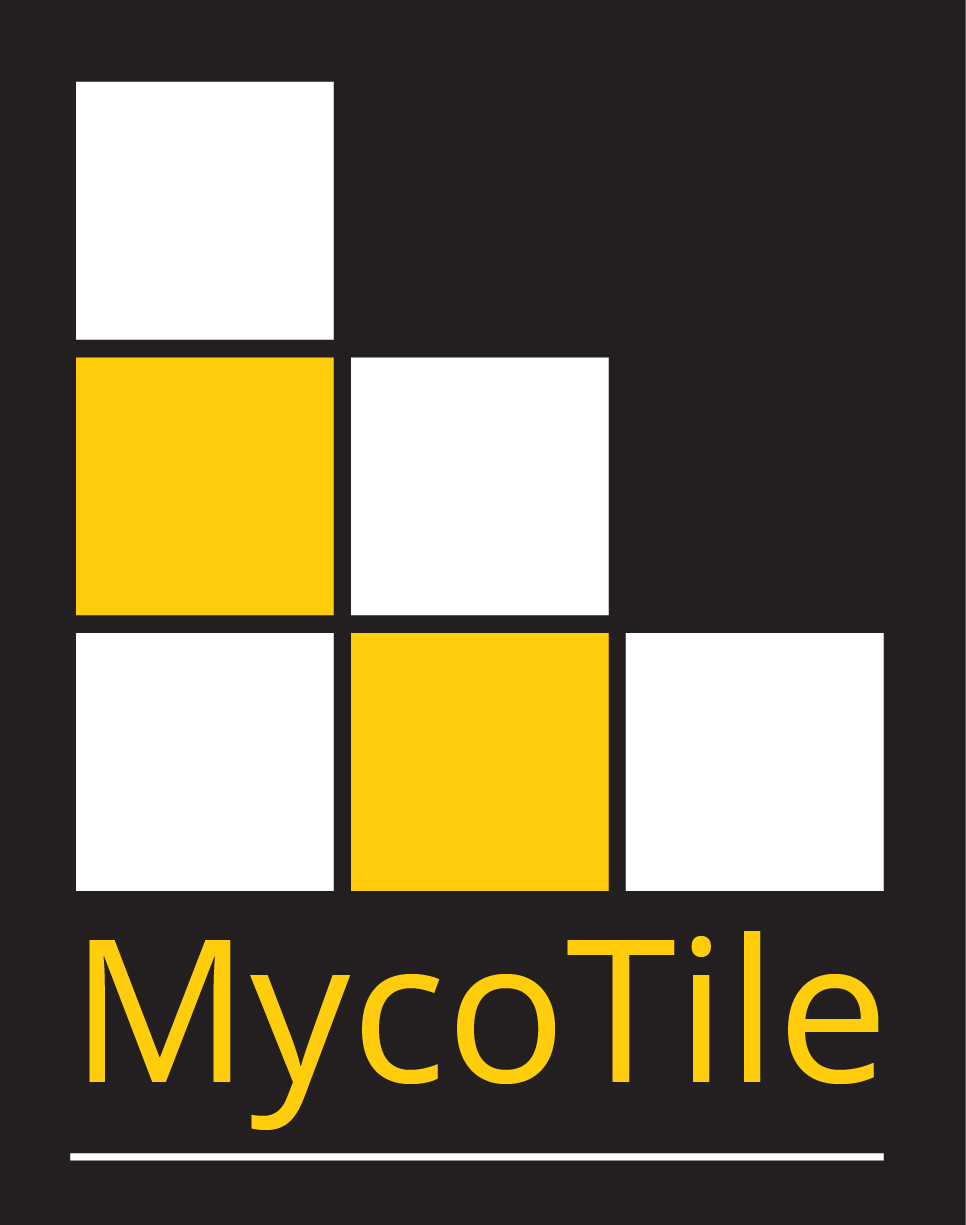The Solution
MycoTile offers a high performance and cheaper alternative to traditional building materials. MycoTile uses a carbon negative process to bond agricultural waste (such as maize cobs, coffee husks, coconut coir and rice husks) with mushroom mycelium. The product is denatured through heat treatment in order to inhibit mycelium growth.
Their first product was suspended ceiling panels, which have superior acoustic performance and fire-retardant properties compared to the available alternatives. The fire-retardancy is naturally enhanced by the chitin that is present in mycelium. They have big plans and are prototyping a larger portfolio of products, such as wall insulation, construction blocks, MDF-style panels and even furniture.
Although the major challenge has been changing public perception on the use of mycelium in construction, MycoTile currently has more demand than they can supply. A recent important step in their growth was the conclusion of a co-manufacturing contract with a government entity. They are establishing partnerships with small scale farmers, who they pay for agricultural waste, to assure security of supply.


 Circular Strategy
Circular Strategy

 Sustainable Development Goals
Sustainable Development Goals
